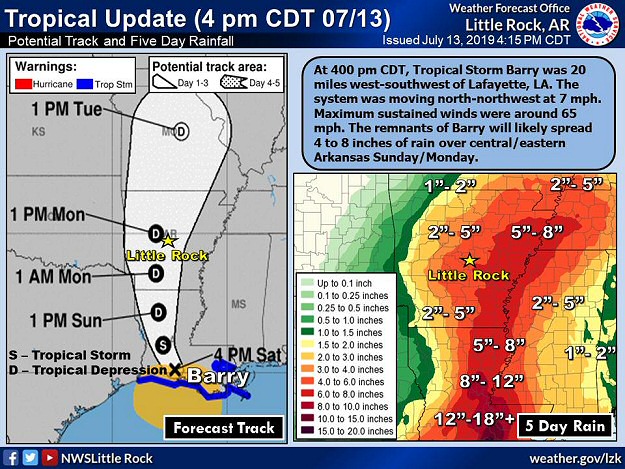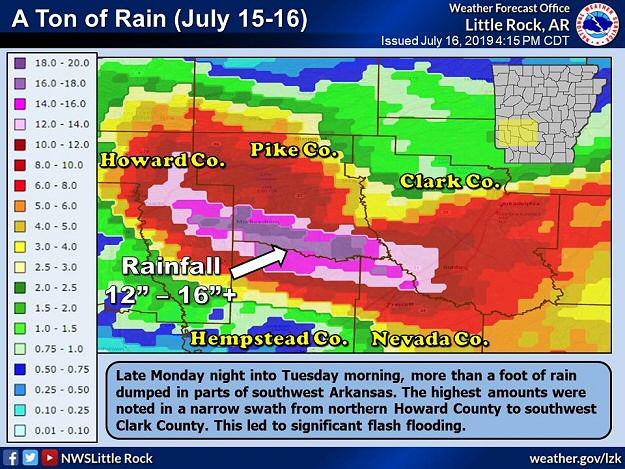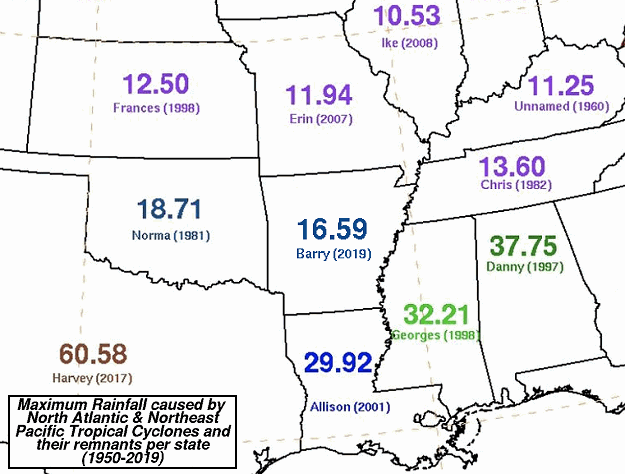|
||
|
In July, minimal Hurricane Barry (75 mph sustained winds) hit the Louisiana Coast on the 13th. This was bad news for a lot of farmers in Arkansas that were trying to get crops going after a very wet spring and overflowing rivers. The remnants of Barry promised to bring another deluge to the region, and threatened to flood fields and wipe out underdeveloped plants. The forecast called for the system to head through western sections of the state, with heavy rain east of the track. More than half a foot of precipitation was expected across the central and eastern counties. |
||


